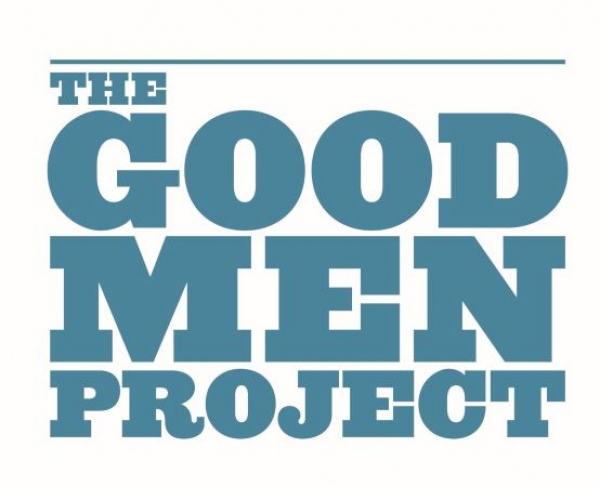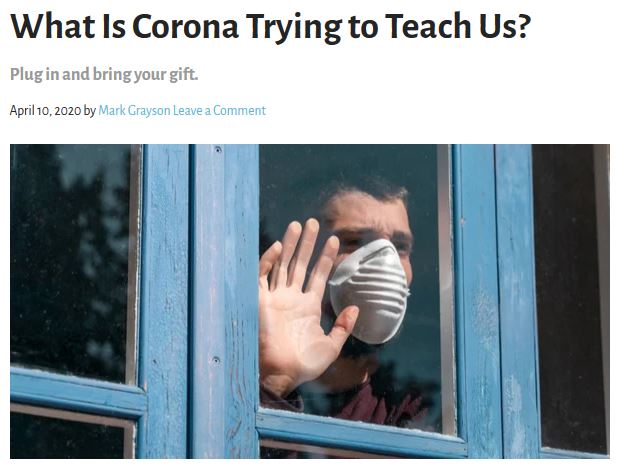SIM News

What is Corona Trying to Teach Us?
04/10/20

As healthcare workers continue to throw themselves into the fight against COVID-19, and policymakers have tough decisions about how to deploy resources and regulate public interaction, I am frustrated watching daily briefings at home. Looking for guidance as to what I can do, I consulted a friend with a singular voice of wisdom and experience in crisis management. She helped organize relief efforts at St. Paul’s Chapel after 9/11, and directed the Office of Disaster Response in New Orleans for the Episcopal Church after Katrina. Her name is Courtney Cowart.
She shared what she had learned leading communities through adaptive change when the world is suddenly different, and plunged into chaos. “People moving through catastrophe and serving others in a community of support tend to grow stronger, more resilient, more trusting, more creative. With greater attention to the needs of others comes a willingness to collaborate and allow efforts to self-organize.”
It is her view that while we have all been schooled in the destructive impact of trauma (PTSD), we are less aware of the positive impacts that sometimes occur during these periods of seemingly bottomless loss. She offers many brilliant examples of the positive transformation of individuals engaged in a self-organizing community in her book An American Awakening: From Ground Zero to Katrina/The People We Are Free to Be. As she describes in vivid detail the way relief efforts at St. Paul’s Chapel magically unfolded with little direction, it seems self-evident to those of us who distrust releasing control that some higher power must have been orchestrating the work.
She asserts that leaders in a time of crisis must learn to operate with a level of openness and trust, allowing people to take ideas and run, letting them rise and fall on their own merits, and be okay with failure. Enabling a self-organizing system to mobilize people into action ultimately produces triumphs, along with misfires, that sometimes hit the national headlines. It also engages and builds a community of practice that is more connected, experienced, and alive on the other side of disaster.
She admits that there is some “tension” in adopting this leadership style, as it often is at odds with the structure and discipline that is necessary to survive in these situations, and she has high respect for individuals who maintain order. But she insists that a leadership group must also be “creative and adaptive, as well as directive, at the same time, because you cannot control all the grassroots responses that occur.” In the end, “you need someone who is a risk-taker with a big vision working with someone who can impose structure. That’s why it’s a team sport. You have to go into it with a deep collaborative heart. The scale of response is always way beyond what one individual or group can execute.”
Her observations made me pause. In a world that tends towards command and control decision-making, with endless major and minor power plays as a result, she is calling for a new form of leadership, whose qualities are strikingly similar to the new forms of masculinity that are emerging — open, heart-centered, collaborative, relational. Unfortunately, these capacities are still in short supply at a time when we need them the most.
When asked what we could do now, her response was immediate, “Move through the fear of pain and suffering, draw close to it and simply be kind. The adrenaline inherent in this moment will make you hypersensitive to where the human need is most acute in your community. We are all hard-wired to be healers. Plugin and bring your gift.”
She is convinced that despite our social isolation, we are discovering new ways of connecting and being present for each other. She believes that social media has given us the tools to offer support to both the afflicted and health workers while helping shape the public narrative surrounding this disaster. She suggests that as we struggle to “plugin,” we ask, “What are we lifting up? What are we pointing to? What is the corona trying to teach us?” She insists that the answers to these questions will inform an entire generation’s life’s work, a relief effort that begins now.
Post 9/11, there was a generation of altruism. Post Katrina, a generation developed a passion for racial healing. Post corona? It is ours to discern what our contribution will be.
